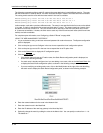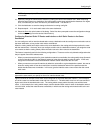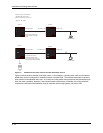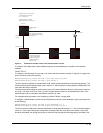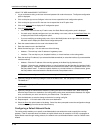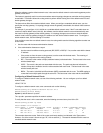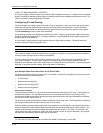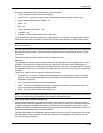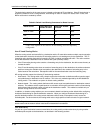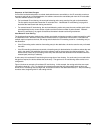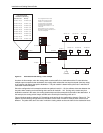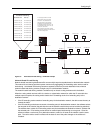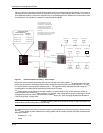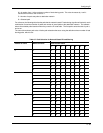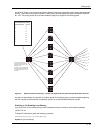
Installation and Getting Started Guide
The load sharing state for all the route sources is based on the state of IP load sharing. Since IP load sharing is
enabled by default on all HP routing switches, load sharing for static IP routes, RIP routes, OSPF routes, and
BGP4 routes also is enabled by default.
Table 6.6: Default Load Sharing Parameters for Route Sources
Route Source Default Maximum
Number of Paths
Maximum Number
of Paths
See...
Static IP route
4
a
8
a
6-59
RIP
4
a
8
a
6-59
OSPF 4 8 6-59
BGP4 1 4 10-25
a.This value depends on the value for IP load sharing, and is not separately
configurable.
How IP Load Sharing Works
When the routing switch receives traffic for a destination and the IP route table contains multiple, equal-cost paths
to that destination, the device checks the IP forwarding cache for a forwarding entry for the destination. The IP
forwarding cache provides fast path for forwarding IP traffic, including load-balanced traffic. The cache contains
entries that associate a destination host or network with a path (next-hop router).
• If the IP forwarding sharing cache contains a forwarding entry for the destination, the device uses the entry to
forward the traffic.
• If the IP load forwarding cache does not contain a forwarding entry for the destination, the software selects a
path from among the available equal-cost paths to the destination, then creates a forwarding entry in the
cache based on the calculation. Subsequent traffic for the same destination uses the forwarding entry.
HP routing switches support the following IP load sharing methods:
• Host-based – The routing switch uses a simple round-robin mechanism to distribute traffic across the equal-
cost paths based on destination host IP address. This is the only method supported by the HP 6308M-SX
routing switch. This method is an option on chassis routing switches.
• Network-based – The routing switch distributes traffic across equal-cost paths based on destination network
address. The software selects a path based on a calculation involving the maximum number of load-sharing
paths allowed and the actual number of paths to the destination network. This method is available only on
chassis routing switches and is the default.
In addition, on chassis routing switches you can use network-based load sharing as the default while configuring
host-based load sharing for specific destination networks. When you configure host-based load sharing for a
specific destination network, the routing switch distributes traffic to hosts on the network evenly across the
available paths. For other networks, the routing switch uses a single path for all traffic to hosts on a given network.
NOTE: Regardless of the method of load sharing that is enabled, the routing switch always load shares paths for
default routes and the network default route based on destination host address.
Path Redundancy
If a path to a given destination becomes unavailable, the routing switch provides redundancy by using another
available equal-cost path to the destination, as described in the following sections.
6 - 50



